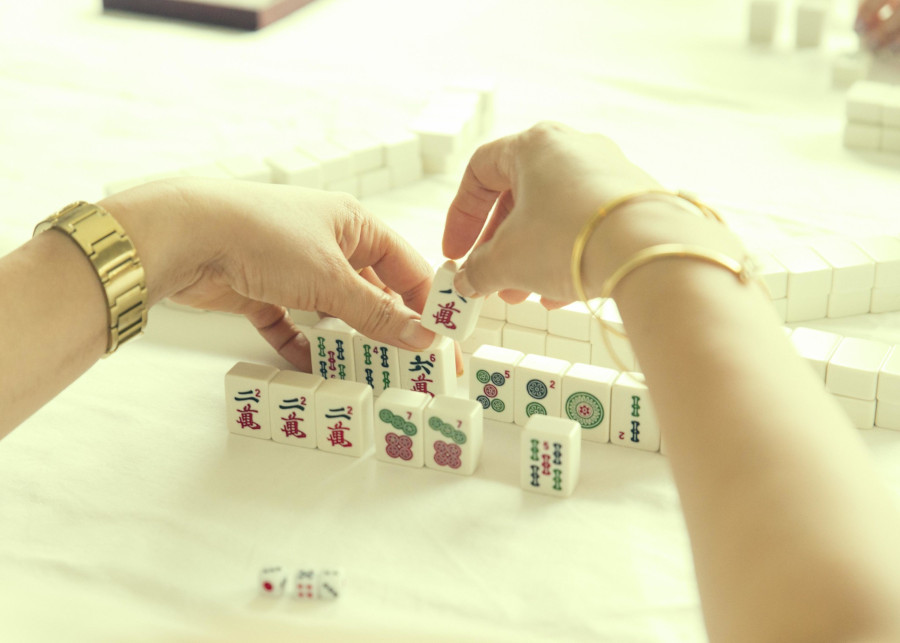More than a gambling game, mahjong is a community-building activity where the folding table is the basis for essential social interactions. In Hong Kong, mahjong is played at family dinners, holiday celebrations, and in parks. Indeed, Stanford mahjong researcher Annelise Heinz attributes the importance and longevity of mahjong to its social aspects. Luck and strategy intertwine in this ubiquitous game with a history spanning two centuries, in which mathematical awareness is just as important as the style with which you handle and touch-identify your tiles.
The origins of mahjong
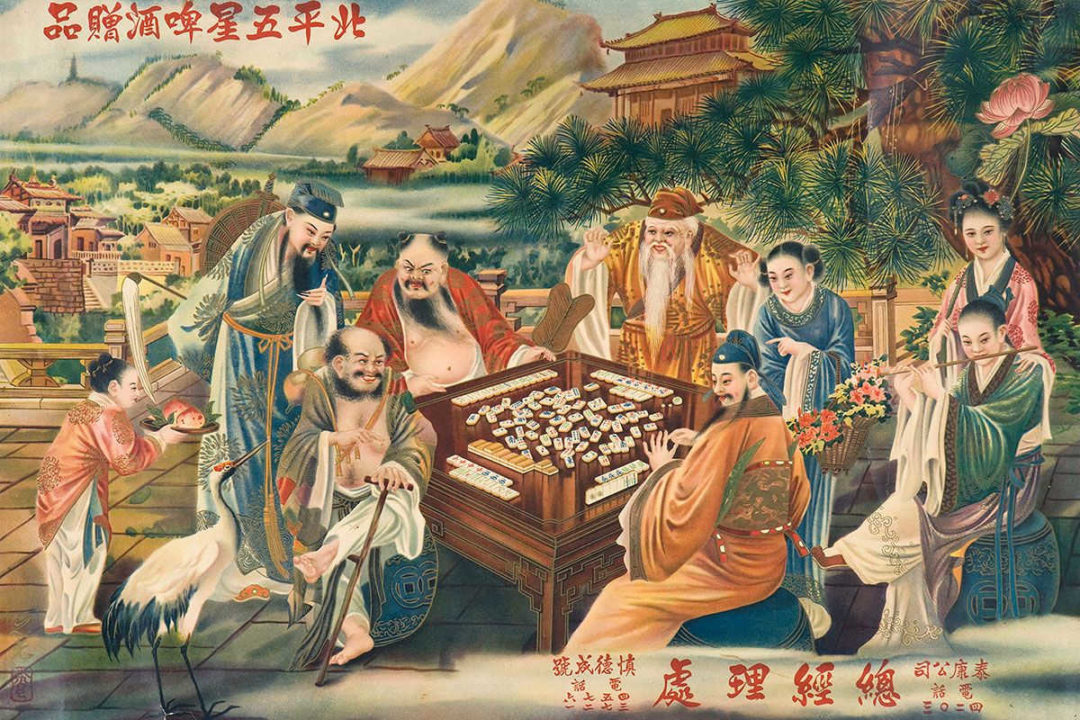
The origins of the game are contested and multiple stories are considered, even to the point of legend. It may have evolved from similar card games madiao () or yezi () during the Ming Dynasty, which were played with cards of four suits numbered 1-9 and extra flower cards. Other theories suggest soldiers invented it to pass the time during the Taiping Rebellion.
Most scholars generally agree that mahjong developed in small provinces near Shanghai in the mid-to-late 18th century. By the end of the 18th century, mahjong gained widespread play throughout Beijing and Shanghai. As interest spread throughout China, American expatriates started taking the game on. It was eventually imported to the USA with simplified rules by American salesman Joseph Babock, where it became popular especially among housewives as a mark of wealth and cultural sensitivity. The game is still popular among Jewish communities and Chinese diaspora in certain parts of the USA.
How to play mahjong
Hong Kong-style mahjong is characterized by its large tiles (which are significantly larger than Taiwanese and Japanese tiles), fan (番) points system, and designation of flower tiles as bonus tiles.
In short, the gameplay consists of four players taking turns drawing tiles from the middle of the table until one forms a particular winning combination of four sets of three and one pair.
If you don’t have tiles to play the game, you can also easily play Mahjong online. These games come with numerous benefits.
- Various game modes including classic, spider, pyramid, and many more.
- Customizable settings to change the background, tile sets, and game layouts.
- Statistics tracking including their win/loss ratio, time taken to complete a game, and highest score achieved.
- Hint and shuffle options to help you identify the right moves.
Game materials
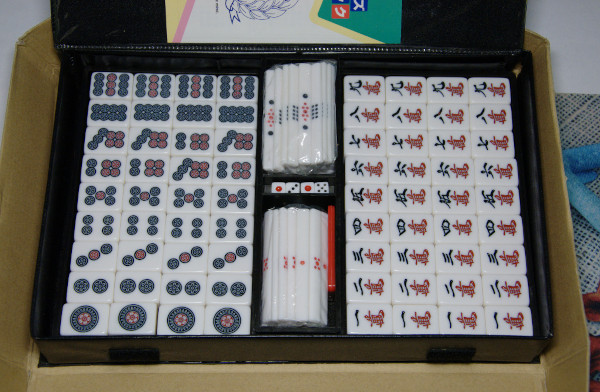
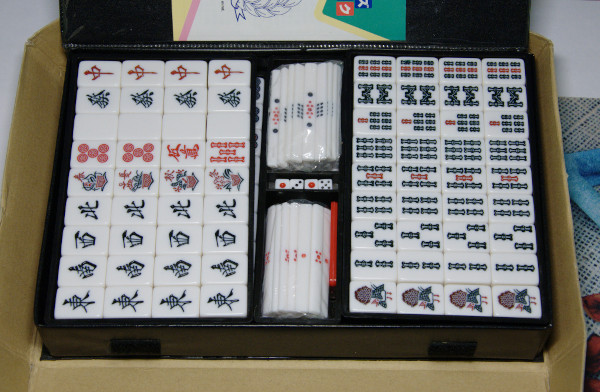
There are 144 tiles. First, there are three sets of suits all numbered from 1-9: circles (筒子, tung zi), bamboo sticks (索子, sok zi), and number characters (萬子, man zi). There are four of each number for a total of 108 suit tiles.
Next, there are two sets of honor tiles. Honor tiles are the regular, non-numbered tiles. Four Dragon tiles (green, red and white) and four Wind tiles (East, South, West, and North) make up a total of 28 honor tiles.
Finally, bonus tiles add extra points to your score at the end of the round. There are four Flower tiles and four Season tiles for a total of eight bonus tiles.
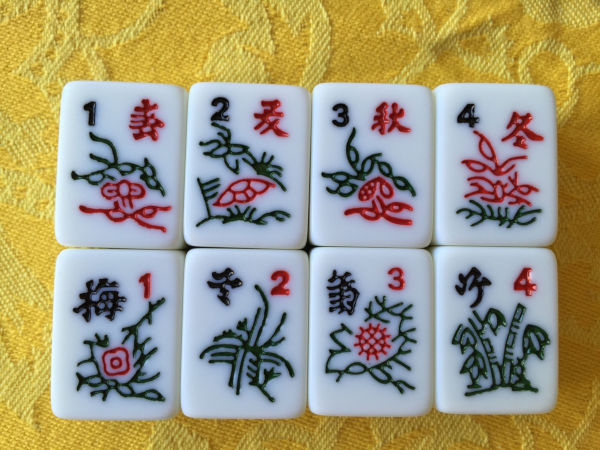
The flower tiles are Plum Blossom (梅, one), Orchid (蘭, two), Chrysanthemum (菊, three), and Bamboo (竹, four). The season tiles are Spring (春, one), Summer (夏, two), Autumn (秋, three), and Winter (冬, four).
Other game materials include a wind die indicating the prevailing wind for that match, a die holder, two or three regular die, and chips.
How the table is set up
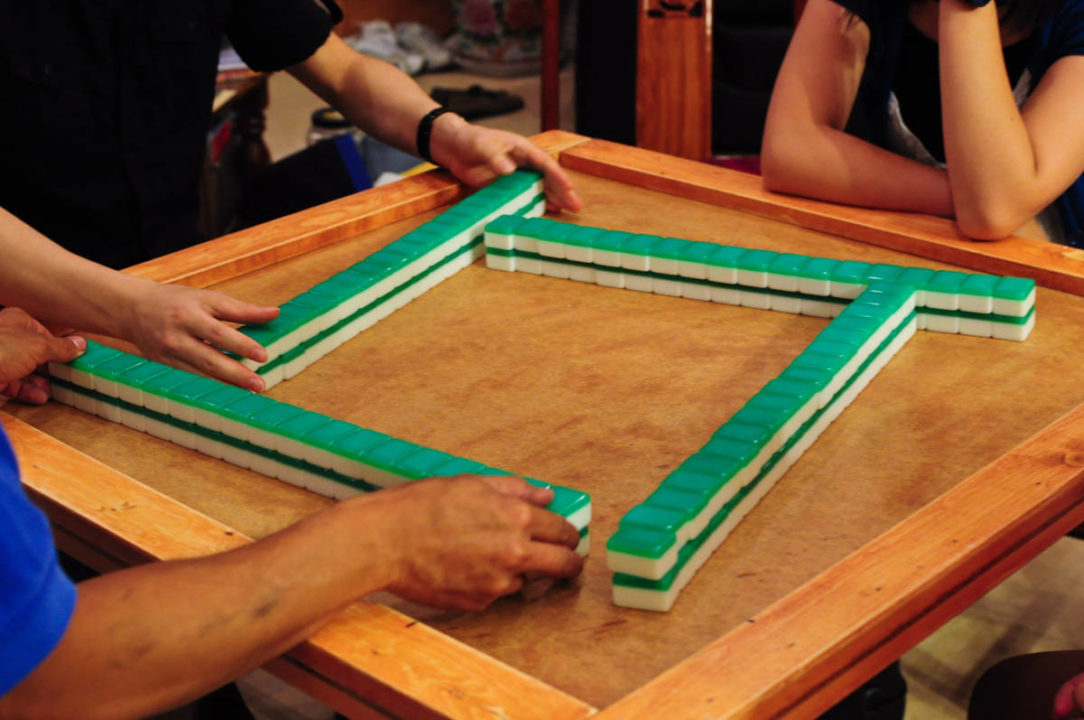
A standard game is played with four players. The dealer/East wind position (the dealer begins play and often receives more points when winning and loses more points when losing) is decided in one of the following ways:
- A randomly chosen player throws a die. The rolled number is counted counter-clockwise from the rolling player. The seat of the player which the counting lands on is the East seat, which is the dealer position.
- Alternatively, each player rolls the die and whoever rolls the biggest number is the dealer.
The four wind tiles are then shuffled and then stacked facedown on top of each other. The player currently in the East position rolls a die. The rolled number is counted counter-clockwise starting from the rolling player. The player who the counting lands on takes a tile from the stack, and going counter-clockwise everyone picks up a tile. Using the East seat as a guide, whichever wind direction you pick up is the position you sit in.
If the round is tied or the dealer wins, they keep their position in the East seat until they lose. Some players set a limit for three consecutive hands with the same seat positions and prevailing wind. When every player has had a turn as the dealer, that is the end of one match.
There are four matches in a complete game, each representing a prevailing wind. That is, in the first match the prevailing wind is East. In the next match, the prevailing wind is South, then East, then North. Effectively, each player spends at least one round in the East seat. The prevailing wind affects the scoring for that match.
Gameplay
The game starts with shuffling the tiles to prevent cheating. The tiles are pushed around the table using both hands, producing the clacking noise that gives mahjong its name. In Cantonese, the term 麻将 (ma jeuk) means squabbling sparrow.
Each player then takes 36 tiles from the middle and organizes them into two lines stacked on top of each other. These four ‘walls’ or ‘trains’ are pushed into the centre of the table into a square or slightly offset square. From here, the players will get their starting hands.
In a highly exact, predefined sequence, each player takes 13 tiles from the walls except for the dealer, who starts with 14. The dealer evaluates their hand and discards one chosen tile into the middle. The player to their left goes on to draw one tile from the ‘wall’ and discard one tile. The turns continue clockwise.
The objective is to form combinations of the following sets, called melds:
- Pong (碰), 3 identical tiles,
- Kong (槓), 4 identical tiles,
- or Sheung (上), 3 tiles of the same suit in sequence.
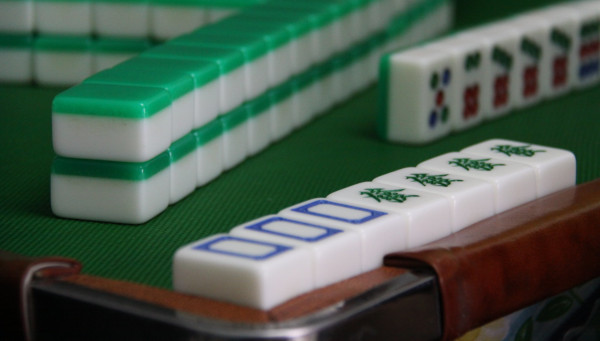
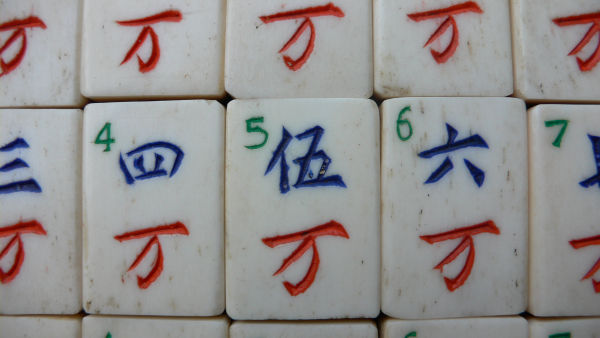
Claiming tiles
You can claim other players’ discard tiles if one of your sets is completed by it. You must exclaim the respective term “pong”, “kong”, or “sheung” quickly in case another player wants to claim the same tile. You must then reveal that completed meld. After the tile has been claimed, you go on as normal to draw one tile from the back end of the train and discard one tile.
Guidelines for claiming discards are as follows:
- You can claim pong from any player.
- You can only claim sheung from the player immediately preceding you.
- Once you form a meld, it cannot be split apart to form other sets. Keep in mind that this could be a disadvantage because when you form sets with your own tiles, a kung for example could be split at any point to form a sheung if necessary.
- You cannot use a discard to complete a pair unless it forms your winning hand.
There are also other tiles that must be immediately exposed. For example, when you get a flower tile, it must be revealed and another tile picked up.
Winning hands
When a player completes their hand of four sets and a pair, they exclaim “sik wu,” (Cantonese for “eat congee”) and are the winner of the round. The wind seats then rotate counterclockwise and the tiles are reset into four walls.
Basic winning hands:
- Basic hand, or gai wu (雞糊): a mix of sequence and three-of-a-kind sets + a pair (Under some rules, the basic hand can win but not score any points.)
- Common hand, or ping wu (平糊): four sets of sequences + a pair
- Mixed one suit, or wun yat sik (混一色): sets of one suit’s tiles and honor tiles + a pair
- All one suit, or qing yai sik (清一色): all sets made up of one suit’s tiles + a pair
- All triplets, or dui dui wu (對對糊): four sets of three-of-a-kind + a pair
- Small Dragons, or siu saam yun (小三元): two sets of dragons, two sets of any other tiles + a dragon pair
- Great Dragons, or dai saam yun (大三元): three sets of dragons, another random set + a pair
- Small Winds, or siu sei hei (小四喜): three sets of winds, another random set + a wind pair
- Great Winds, or dai sei hei (大四喜): four sets of winds + a pair
Difficult winning hands:
- Ends, or yiu gao (么九): pongs or kongs of ones and nines from the suits
- Thirteen Ends, or sup saam yiu (十三么): the first and ninth tiles from all of the suits, one of the wind tiles, one of the dragon tiles, and one more extra of any of these
- Heavenly hand, or tin wu (天糊): A winning hand in your initial hand. Only possible for the person sitting in the dealer’s seat
- Earthly hand, or dei wu (地糊): A winning hand formed by claiming the first tile discarded by the dealer
Scoring
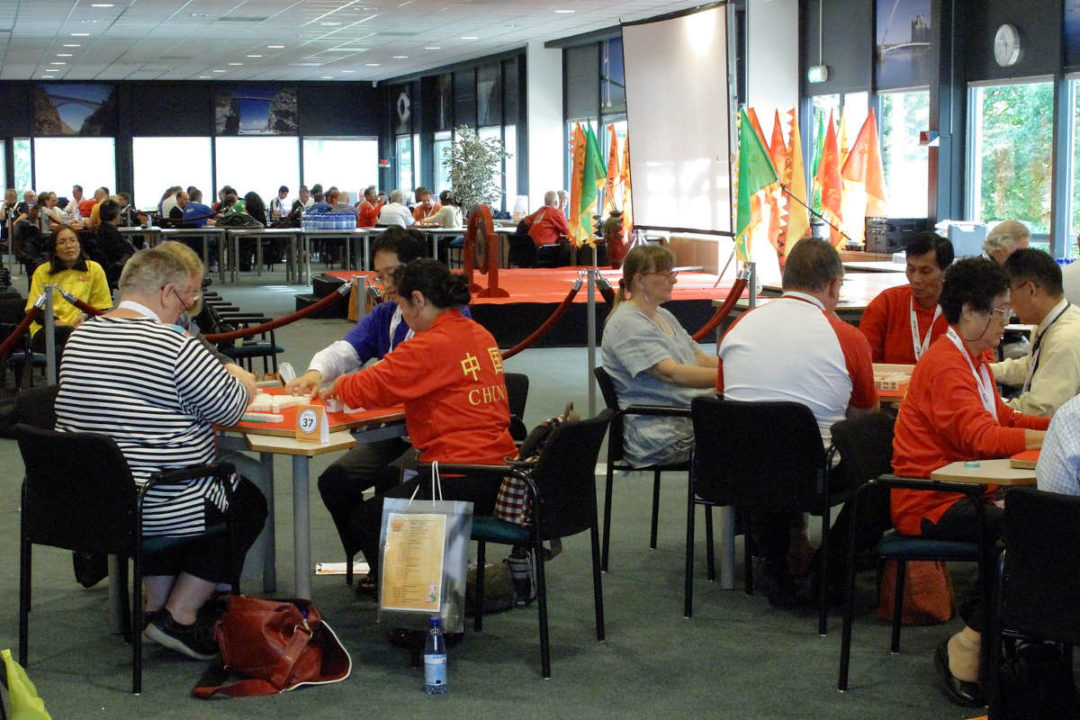
Scoring rules vary geographically even from the classical Chinese rules to Hong Kong rules. A set of rules is usually agreed upon at the beginning of the game, during which players decide the minimum score of fan required to win. For example, the Hong Kong version has a minimum score of 4, 6, 8, 10, or 13 fan or no upper limit. The Chinese version has a minimum score of 88 fan. For reference, a hand made up of one suit and some honor tiles is generally worth 3 fan, while a hand made up of only one suit is worth 6 fan.
The basic Hong Kong scoring rules are that everyone begins the game with the same number of points. Each assembled set is worth a certain number of fan. When a player wins, the number of points they receive for the round is determined by deducting the losers’ total scores from their score. Hong Kong rules dictate that only the winner scores points.
In the Hong Kong system, the winner also gets bonus points depending on how the win was accomplished. If the winning tile was a discard by another player, the discarder must pay the winner double; if the winning tile was a self-draw from the wall, every losing player must pay the winner double.
Winning strategies
- Don’t always claim a discard that will complete one of your sets, especially early on in the game. Because you have to reveal melds completed by claimed tiles, it gives other players insight into what hand you’re creating.
- Consider the probability of completing certain sets over others. For example, the probability of drawing a 1 or 4 to complete a sequence when you’re holding a 2 and 3 is higher than the probability of drawing three of a kind.
- Keep track of which tiles are out of play (i.e. the discards in the middle, as well as the “gardens”, which are yours and other players’ revealed melds) so you’re not waiting for a tile that won’t come.
- Your secondary goal is to prevent others from winning. Especially if the round is nearing its end, i.e. the number of tiles in the trains are getting low, then be careful not to discard tiles you don’t see in the discard area as that means other players are likely building sets upon them.
Other versions of mahjong
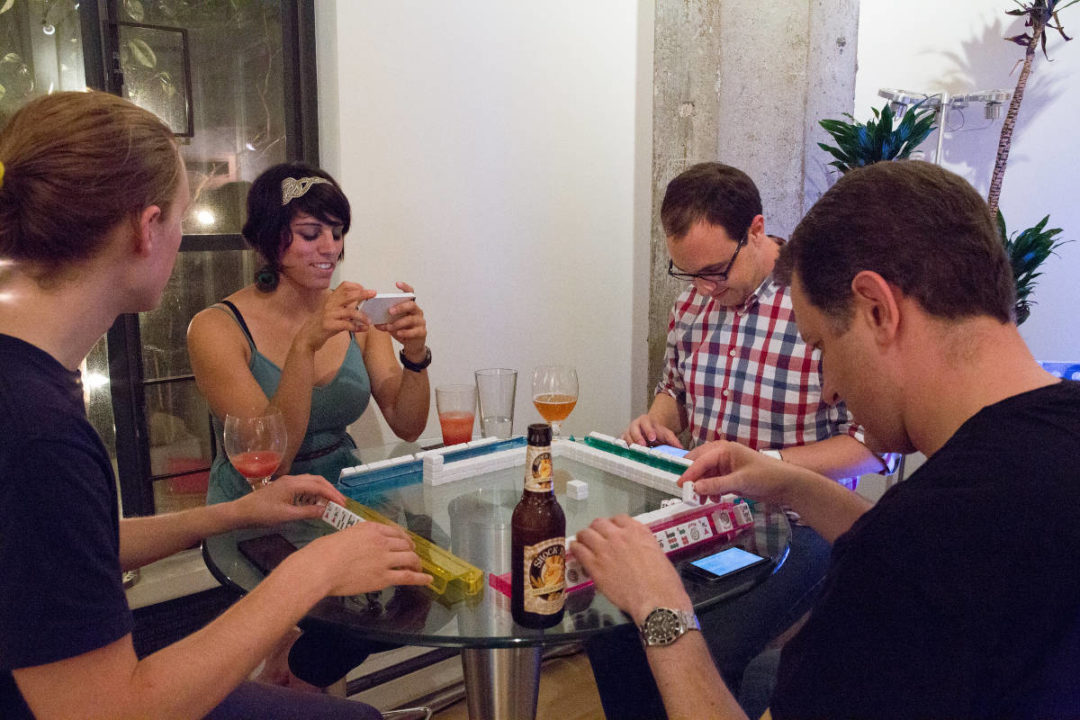
There are multiple versions of mahong with variations in or even new rules, additional tiles, and different tile designs, including Vietnamese, Filipino, and Fujianese along with the ones described below.
The classic Chinese version precedes the Hong Kong version and varies in minor scoring rules. Unlike the Hong Kong version, losing players can score points. As mentioned before, the upper limit for Chinese mahjong is 88 fan.
The American version adds 8 all-purpose Joker tiles. Also markedly different from the Chinese version is that the tiles are inscribed with numbers and letters to make their values more obvious. The objective, extremely different from the Chinese version, is to match your tiles to a specific hand released annually by the National Mah Jongg League and American Mah-Jongg Association. Each predefined set is worth a certain number of points (called a double) and scores are based on how many sets players can match.
Introduced in 1924 by a soldier returning to Tokyo from China, the Japanese version is called Riichi mahjong. The basic Chinese rules of calls and sequences remain the same, but the scoring system is more complex. Tiles are also markedly thinner. It is not as important to win individual rounds as it is to accumulate points throughout consecutive games, and this is achieved through careful planning and strategy. Riichi mahjong also adds the rules of riichi (reach) and dora (bonus tile). The riichi rule states that a player may declare that they have a ready hand, that is, that they’re only one tile away from a ‘legal hand’. After declaring riichi, the player cannot make any changes to their existing hand; they can only draw tiles and must discard unless it’s a winning tile. The dora rule states that any tile can become a bonus tile that adds exponential value to your hand. The minimum score for a winning hand is 16 or 24 han, which matches the Chinese fan in written character and meaning.
The Taiwanese version dictates that players require an additional set of pong, kong, or sheung on top of the traditional four in a winning hand. Thus, players hold 16 tiles at all times rather than 13.
The World Series of Mahjong style is standardized for international tournaments. This version has a relatively simplified scoring system, rewarding sets based on how difficult they are to assemble and omitting score modifiers like doubling your score if you self-drew your winning tile.
Can you play mahjong with 2 or 3 people?
Two people can play with simplified rules. The tiles can be set up in walls or simply placed in a pile. Gameplay remains largely the same Standardized scoring for two players is as follows: 2 pts/pair, 3 pts/pair of honors; 4 pts/pong, 5 pts/kong, 6 pts/pong of honors, 10 pts/kong of honors, no pts/sheung.
Three-player mahjong is a bit more involved. This variation is mainly played in Korea, Japan, and Malaysia. The main rule alterations are that bamboo tiles are removed, sheungs cannot be formed from discards, players keep their discards in front of them, and players cannot win using a discard tile if the tile type and number is one they’ve previously discarded. Gameplay-wise, it is essentially the same as the standard four-player version. The same four walls of tiles are stacked for the drawing of the initial hands (one player makes two walls).
Where to buy a mahjong set in Hong Kong
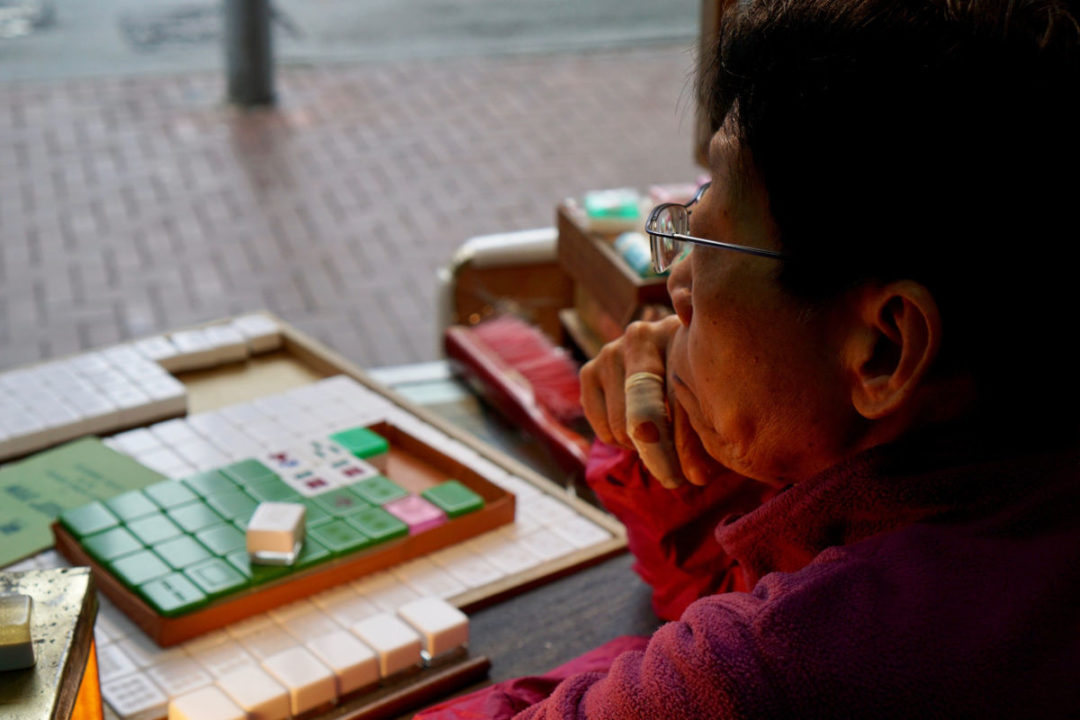
Custom handmade sets can still be purchased at Kam Fat Mahjong (2 Bulkeley St, Hung Hom) and Biu Kee Mah-Jong (235 Temple Street, Jordan). These hand-carved, individually painted sets require more time and expertise to produce and they are priced to match that level of care (~3,000HKD). There used to be ten mahjong shops on the same street as Biu Kee, but as the game has decreased in popularity among younger generations and a simplified version has migrated to digital play, these and mahjong parlours have closed en masse.
Today, mahjong tiles are mostly mass-produced in molds. Find these more affordable sets (~600HKD) at Chi Ming Majong Shop (60 Fa Yuen Street, Mong Kok) and 公友祥蒜雀象牙 (69 Lai Chi Kok Road, Prince Edward).


